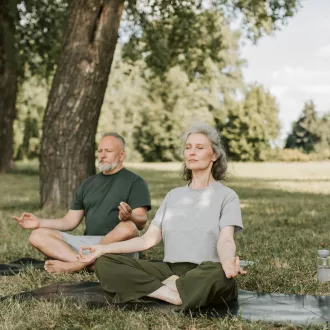Transcription Influences on life enhancement coaching
Dania lived part of her life influenced by her mother's ideas. Old maid, old and ugly. Those words had an effect on Dania: she never found a partner, never wore make-up and what was the nickname she earned? Exactly: ¨ugly¨. Precepts just as inflexible we came to accept. As a coach you will attack these beliefs, converted into emotions or feelings.
In this video we will provide some tips to positively influence others using a social conscience, a term proposed by Bisquerra, Spanish psychologist, in his concept of Emotional Intelligence, with a more focused approach to the environment and social relationships, unlike the one proposed by Daniel Goleman, American psychologist.
Social awareness.
Emotions are short-lived psychophysiological reactions originated by a stimulus, either real or imaginary.
The feeling includes several persistent emotions in time, example:
- love. Mood, on the other hand, can be considered as a tendency to feel in some way. We can feel sad for more than three consecutive days.
- Social awareness is the ability to recognize emotions, moods and feelings in others through empathy, body language, tone of voice and the physical distance at which we are involved in our process of inquiring into emotions.
Empathy.
To develop empathy it is necessary to:
- Identify what you feel: Help yourself from an agenda that contains different emotions: happiness, disappointment, embarrassment, shame, sorrow, guilt, sadness, depression, among others, and every time you feel that jump in the stomach point it out with its corresponding reason.
- Active listening: It is not listening to respond, it is listening to understand.
- Do not get defensive just for having to "save your skin in a discussion. Analyze your point of view and those arguments that the other person will repeat over and over again.
- Repeat, nod and smile: An incredible method to make others feel that you are listening to them is to simply paraphrase their last words in the form of a question or nod and smile frequently.
- Use monosyllables or short phrases: Use monosyllables or short phrases that show what you are feeling. But how did it go! Really? I'm bristling!
- This method works as a decisive tool for eliciting hidden emotions. If the person in question does not show sadness about the death of a family member, start using such phrases and you will see their emotional state about it.
Communication.
The voice can reflect the emotional experience of people. The same phrase but in a different tone can give a different twist to our message so it is necessary to understand that:
- When you smile, being angry or in a tired mood, your brain will understand that there was a pleasant stimulus and will improve your mood and therefore will offer you a friendlier tone of voice.
- Speak louder so that what you want to communicate is understood.
- Do not speak too fast. Pronounce each word well to avoid misunderstandings and gain clarity. Focus on the breathing of your diaphragm for each pause you give.
Posture.
Dedicate yourself to discover in front of a mirror what is your usual posture when conversing with people.an upright posture and a wide smile reflects confidence.tilt your chin (not just your head) and your body towards the other person while the tip of your feet point to it shows interest.imitate the posture of your interlocutor just at the moment he makes a gesture but watch that he does not notice it and can go unnoticed.this way you will create a link. If your intention is to present a work or give a speech, never stay static in one place, walk, emphasize your words by gesturing, always calm and with firm steps.
Body language.
Crossing your arms while talking to someone or crossing your feet makes them look like they are not interested in you. Instead, maintain an open and receptive posture, which consists of keeping your arms at your sides or resting them on your feet if you are seated and keeping your legs apart, thus offering comfort and confidence.
Keep in mind that there are also general indicators of aggressiveness: clenched fists, arms crossed at chest height. A prolonged stare can suggest interest but only for 3.3 seconds, longer stares can be intimidating. Tired or sad people often walk with hunched shoulders and shuffling their feet with each step.
Distance.
The more shy a person is, the smaller their personal space will be. For this reason keep a safe distance of 45 centimeters, which is equivalent to holding your arm outstretched.To gain the trust of this type of person, start talking about superficial things first, and then you can go deeper into your object of interest, little by littleIn contrast, if it is an open and extroverted person you can use physical contact: rubbing the shoulder or lift your face if you see her bent down. Extroverts have a wider personal space and tend to seek social contact and react better to it.
influences



